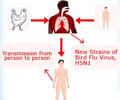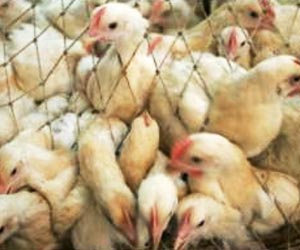Questions were raised about the emergence of a novel H7N9 avian influenza virus in humans in China and its pandemic potential as well as that of related influenza viruses.
Questions were raised about the emergence of a novel H7N9 avian influenza virus in humans in China and its pandemic potential as well as that of related influenza viruses. In a commentary published online today, scientists at the National Institute of Allergy and Infectious Diseases (NIAID), part of the National Institutes of Health, address these questions by evaluating past outbreaks of H7 subtype influenza viruses among mammals and birds and comparing H7 viruses with other avian influenza viruses and strains.
In recent decades, the scientists write, avian H7 viruses have caused numerous influenza outbreaks among poultry in Europe and North America. Since at least 1918, none of these poultry-adapted viruses has evolved to widely infect humans or cause a pandemic. However, some of them have stably adapted to infect mammals such as horses, suggesting that these viruses might become adapted to and transmissible among other mammals, including humans. In particular, the novel H7N9 virus shares some genes with the H9N2 influenza virus subtype, which has also infected humans. This genetic relatedness may predispose it to more easily adapt to humans than other H7 viruses.
The possibility that H7N9 or another H7 virus may adapt to easily infect humans highlights a need for more research on how avian influenza strains adapt to mammals, especially humans, and better integration of influenza research between human and veterinary public health specialists, the study authors conclude.
Source-Eurekalert













